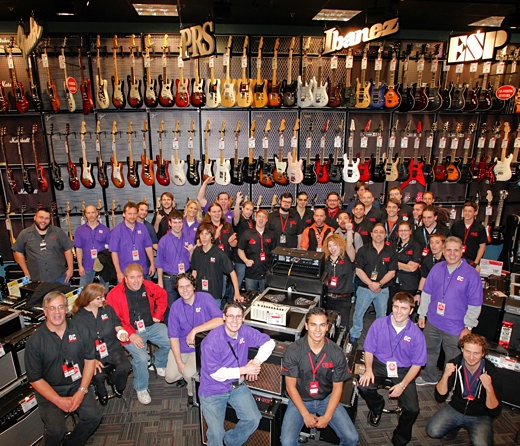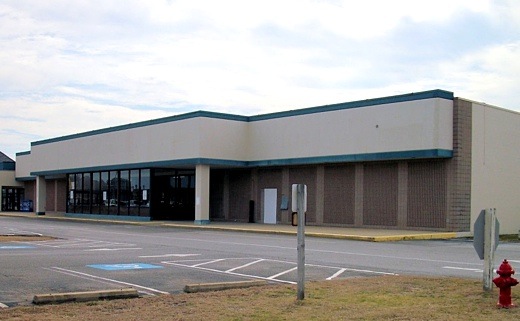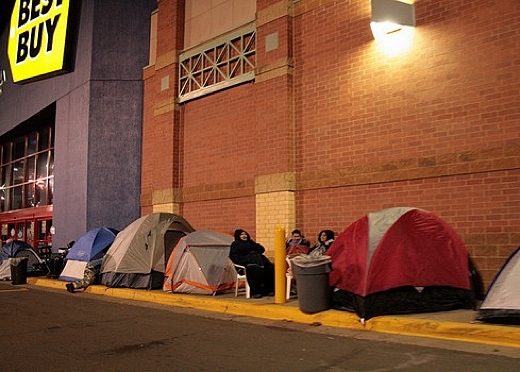SUBHEAD: Through Costco, slaves put squid on U.S. dining tables from South Pacific’s cruelest catch.
By E. Benjamin Skinner on 23 February for Bloomberg News - (http://www.bloomberg.com/news/2012-02-23/slaves-put-squid-on-u-s-dining-tables-from-south-pacific-catch.html)
 Image above: Escaped former indentured worker Yusril, with his son in Indonesia. From original article.
Image above: Escaped former indentured worker Yusril, with his son in Indonesia. From original article.
On March 25, 2011, Yusril became a slave. That afternoon he went to the East Jakarta offices of Indah Megah Sari (IMS), an agency that hires crews to work on foreign fishing vessels. He was offered a job on the
Melilla 203, a South Korea-flagged ship that trawls in the waters off
New Zealand. “Hurry up,” said the agent, holding a pen over a thick stack of contracts in a windowless conference room with water-stained walls. Waving at a pile of green Indonesian passports of other prospective fishermen, he added: “You really can’t waste time reading this. There are a lot of others waiting, and the plane leaves tomorrow.”
Yusril is 28, with brooding looks and a swagger that belies his slight frame. (Yusril asked that his real name not be used out of concern for his safety.) He was desperate for the promised monthly salary of $260, plus bonuses, for unloading fish. His wife was eight months pregnant, and he had put his name on a waiting list for the job nine months earlier. After taking a daylong bus ride to Jakarta, he had given the agent a $225 fee he borrowed from his brother-in-law, Bloomberg Businessweek reports in its Feb. 27 edition. The agent rushed him through signing the contracts, at least one of which was in English, which Yusril does not read.
The terms of the first contract, the “real” one, would later haunt him. In it, IMS spelled out terms with no rights. In addition to the agent’s commission, Yusril would surrender 30 percent of his salary, which IMS would hold unless the work was completed. He would be paid nothing for the first three months, and if the job were not finished to the fishing company’s satisfaction, Yusril would be sent home and charged more than $1,000 for the airfare. The meaning of “satisfactory” was left vague. The contract said only that Yusril would have to work whatever hours the boat operators demanded.
Locked In
The last line of the contract, in bold, warned that Yusril’s family would owe nearly $3,500 if he were to run away from the ship. The amount was greater than his net worth, and he had earlier submitted title to his land as collateral for that bond. Additionally, he had provided IMS with the names and addresses of his family members. He was locked in.
What followed, according to Yusril and several shipmates who corroborated his story, was an eight-month ordeal aboard the Melilla 203, during which Indonesian fishermen were subjected to physical and sexual abuse by the ship’s operators. Their overlords told them not to complain or fight back, or they would be sent home, where the agents would take their due. Yusril and 23 others walked off in protest when the trawler docked in Lyttelton, New Zealand. The men have seen little if any of what they say they are owed. Such coerced labor is modern-day slavery, as the
United Nations defines the crime. (The South Korean owners of the Melilla ships did not respond to requests for comment.)
Debt Bondage The experiences of the fishermen on the Melilla 203 were not unique. In a six-month investigation, Bloomberg Businessweek found cases of debt bondage on the Melilla 203 and at least nine other ships that have operated in New Zealand’s waters. As recently as November 2011, fish from the Melilla 203 and other suspect vessels were bought and processed by
United Fisheries, New Zealand’s eighth-largest seafood company, which sold the same kinds of fish in that period to distributors operating in the U.S. (The U.S. imports 86 percent of its seafood.) The distributors in turn sold the fish to major U.S. companies. Those companies -- which include some of the country’s biggest retailers and restaurants -- sold the seafood to American consumers.
Yusril’s story and that of nearly two dozen other survivors of abuse reveal how the $85 billion global fishing industry profits from the labor of people forced to work for little or no pay, often under the threat of violence. Although many U.S. seafood companies and retailers claim not to do business with suppliers who exploit their workers, the truth is far murkier.
Musty Quarters
Hours after Yusril arrived in Dunedin, New Zealand, the Melilla 203 officers put him to work unloading squid on the 193- foot, 26-year-old trawler. The ship was in bad shape, and the quarters were musty, as the vessel had no functioning dryer for crew linens or work clothes. Yet the conditions seemed comparatively decent to Yusril.
Two years earlier he had worked on the Dong Won 519, operating under the auspices of Sanford Ltd., a 130-year-old, $383 million New Zealand company. On that boat, Yusril says the officers hit him in the face with fish and the boatswain repeatedly kicked him in the back for using gloves when he was sewing the trawl nets in cold weather.
Most unnervingly, the second officer would crawl into the bunk of Yusril’s friend at night and attempt to rape him. When asked for comment, Chief Executive Officer Eric Barratt said Sanford’s observers, which the company placed on all their foreign-chartered vessels (FCVs), reported that the ships “don’t have any issues with labor abuse.”
Conditions Worsen
When the Melilla 203 set sail for the deep waters of the Southern Ocean, conditions worsened, according to the accounts of Yusril and a dozen other crew members. The ship trawled for up to two months at a time, between 12 and 200 miles offshore. The boatswain would grab crew members’ genitals as they worked or slept. When the captain of the ship drank, he molested some of the crew, kicking those who resisted. As nets hauled in the catch -- squid, ling, hoki, hake, grouper, southern blue whiting, jack mackerel, and barracuda -- the officers shouted orders from the bridge. They often compelled the Indonesians to work without proper safety equipment for up to 30 hours, swearing at them if they so much as asked for coffee or a bathroom break. Even when fishermen were not hauling catches, 16-hour workdays were standard.
Fatigue
The resulting fatigue meant accidents, which could bring dismemberment in the cramped below-deck factory where the fish were headed and gutted by hand, then passed along conveyor belts to be frozen. Over the past decade at least two crew members of the Melilla ships have died, according to local newspaper accounts and reports by
Maritime New Zealand, a government regulatory body. Dozens of Melilla crew members suffered injuries, some crippling.
When Ruslan, 36, a friend of Yusril’s on the 203, snapped two bones in his left hand in a winch, it took three weeks before he was allowed to go to a hospital. The morning after his discharge he was ordered back to work but could not carry out his duties. The company removed him before any follow-up medical appointments. “I was a slave, but then I became useless to the Koreans, so they sent me home with nothing,” he says.
Today, back in his home village in Central Java, Ruslan has a deformed hand. While IMS, the recruiting agency, finally paid him $335 for three months of work, it has blacklisted him, according to Ruslan, because he spoke to investigators, and it has refused to help with medical bills.
Ecological Infractions
During the last decade, New Zealand authorities repeatedly fined or seized the Melilla ships for ecological infractions, such as a 2005 oil discharge in
Lyttelton (LPC) Harbor, which the country monitored by satellite and occasional inspections by Ministry of Fisheries observers. Crimes against humanity were secondary. Scott Gallacher, a spokesman for New Zealand’s Ministry of Agriculture and Forestry (which merged with the Ministry of Fisheries in July), explained that “observers are not formally tasked” with assisting abused crew, though they may report abuses to the Department of Labour. Yet Yusril said that when he once whispered a plea for help, an observer expressed sympathy but said it was “not my job.”
New Zealand authorities had plenty of prior evidence of deplorable working conditions on foreign vessels like the Melilla. On Aug. 18, 2010, in calm seas, a Korean-flagged trawler called the Oyang 70 sank, killing six. Survivors told the crew of the rescuing vessel their stories of being trafficked. A report by Christina Stringer and Glenn Simmons, two researchers at the University of Auckland Business School, and Daren Coulston, a mariner, uncovered numerous cases of abuse and coercion among the 2,000 fishermen on New Zealand’s 27 FCVs.
New Zealand Inquiry
The report prompted the government to launch a joint inquiry. The researchers gathered testimony from New Zealand observers who saw abuses being committed even after they had boarded ships. “Korean officers are vicious bastards,” one observer said, as quoted in the report. The source said a factory manager “rapped” a 12-kilogram (26 pounds) stainless steel pan over a crew member’s head, splitting the top of it, with blood “pissing out everywhere.” The observer said he gave the Indonesian fisherman 26 stitches.
After eight months on the Melilla 203, Yusril and 23 other crew members protested their treatment and pay to the captain. The move came after a Department of Labour investigator visited the ship in November 2011, when it was docked in Lyttelton. The official gave Yusril a fact sheet stipulating that crew members were entitled to minimum standards of treatment under New Zealand law, including pay of at least $12 per hour. When deductions, agency fees, and a manipulated exchange rate were subtracted, the fishermen were averaging around $1 per hour.
Retribution Threats
The captain dismissed the document and threatened to send them home to face retribution from the recruiting agency. Believing that the New Zealand government would protect them from such a fate, Yusril and all but four of the Indonesian crew walked off the boat and sought refuge in Lyttelton Union Parish Church. Aided by two local pro bono lawyers, they decried months of flagrant human rights abuses and demanded their unpaid wages under New Zealand’s Admiralty Act.
Ten miles from Lyttelton, in neighboring Christchurch, stands the headquarters of United Fisheries, the company that exclusively purchased the fish that Yusril and his mates caught. The building features gleaming Doric columns topped with friezes of chariot races. It was designed to resemble the temples to Aphrodite in Cyprus, the homeland of United founder Kypros Kotzikas.
‘High Standard’
The patriarch started in New Zealand with a small fish-and- chip restaurant. Some 40 years later, his son, Andre, 41, runs a company that had some $66 million in revenue last year. Although three Melilla crew members, citing abuse, had run away nine days before I spoke with Kotzikas, he told me he had heard of no complaints from crew on board the ships, and he had personally boarded the vessels to ensure that the conditions “are of very high standard.”
“I don’t think that claims of slavery or mistreatment can be attached to foreign charter vessels that are operating here in New Zealand,” he said. “Not for responsible operators.”
In an e-mail, Peter Elms, a fraud and compliance manager with Immigration New Zealand, cited a police assessment that found that complaints from crews amounted to nothing more than disputes over
work conditions, alleged minor assaults, intimidation, workplace bullying and non-payment of wages. Elms said his department had two auditors who visited each vessel every two or three years, and they had found nothing rising to the level of human trafficking, a crime punishable in New Zealand by up to 20 years in prison.
‘Beautiful Stuff’
Kotzikas said that while New Zealand’s labor laws are “a thousand pages of, you know, beautiful stuff,” he believed they did not necessarily apply beyond New Zealand’s 12-mile territorial radius.
Half of United Fisheries’ annual revenue is generated outside New Zealand, spread across five continents. In the U.S., which imports an estimated $14.7 billion worth of fish annually, regulators are beginning to pay attention to the conditions under which that food is caught.
The California Transparency in Supply Chains Act, as of Jan. 1, requires all retailers with more than $100 million in global sales to publicly disclose their efforts to monitor and combat slavery in their supply chains. The law covers some 3,200 corporations that do business in the state, including several that trade in seafood.
Kotzikas said his company sold ling, a species of fish caught by the Melilla crews, to Costco Wholesale Corp, America’s largest wholesaler and the world’s seventh-largest retailer.
Costco
As is true with many seafood exports from New Zealand, the exact quantity of United’s sales to Costco was untraceable through public shipping records. Costco did not respond to requests for comment about the sales and the abuse allegations.
In New Zealand, there is no independent auditing of catch method once a fish has been landed and processed. Ling caught by longlines is considered to be of higher quality and more environmentally sustainable than ling hauled by trawlers. As a result, longline-caught fish can fetch double the price, providing incentive for fraud and mislabeling.
As recently as 2008 the Melilla ships were fined more than $300,000 for “trucking,” which means misreporting catches from one fishing area to another. New Zealand officials have not, however, accused them or any other vessel of trying to mislabel trawler-caught fish as longline-caught.
‘Well Away’
Dean Stavreff, managing director of Quality Ocean --- the Christchurch-based company that exported the fish and whose largest shareholder is Kotzikas -- said Costco purchases ling processed through the facility at United Fisheries headquarters.
While he didn’t oversee that process, Stavreff insisted that all of the ling that Quality Ocean sold Costco had been caught on “longline” vessels operated by Talley’s Group Ltd and Okains Bay, two companies that “stay well away from the alleged slave labor that is associated with the Melilla ships.”
Costco advertises that it offers only chilled, longline- caught ling to U.S. consumers. The retailer, which annually audits United’s processing facility but not its vessels, had issued the company a six-page Supplier Code of Conduct, which laid out minimum labor conditions and specifically prohibited slave labor, human trafficking and physical abuse of employees.
Other large U.S. retailers also do business with United Fisheries. (Thirteen employees at nine seafood companies contacted for this article agreed to speak only on background.) PF Chang’s China Bistro Inc, a Scottsdale, Arizona-based chain with more than 200 restaurants worldwide and more than $1.2 billion in annual revenue, purchased squid exclusively through Turner, a California-based importer.
Squid
According to Import Genius and Urner Barry shipping records, Turner bought at least 568,554 pounds of squid from United since Nov. 2010. Squid was one of the most common seafood species caught by fishermen held on the Melilla boats, according to Yusril and other crew members. Turner did not respond to requests for comment. A representative for PF Chang’s declined to comment on record.
Honolulu-based importer P&E Foods Inc has also bought at least 48,940 pounds of squid from United since November 2010. According to P&E’s president, Stephen Lee, his company sells squid to Sam’s Club, the 47 million-member wholesaler.
Lee said he was unaware of allegations of abuse on ships chartered by United, a company with which Lee has done business for “20, 30 years.” He added that he did not know whether any of P&E’s buyers required him or his suppliers to sign a code of conduct for labor practices. Carrie Foster, senior manager for corporate communications at Sam’s Club, said her company does require such signed agreements from their suppliers.
Risking Punishment
Another New Zealand company with ties to U.S. retailers is Sanford, the country’s second-largest seafood enterprise. On Nov. 3, I interviewed crew members of the Dong Won and Pacinui vessels, charters catching fish for Sanford, near the docks at Lyttelton. These men risked punishment by speaking out: Less than a week earlier three Pacinui crew members who had complained were sent back to
Indonesia to face the recruiters.
A Dong Won deckhand said he felt like a slave as he simulated a Korean officer kicking him on the ground. Their contracts, issued by IMS and two other Indonesian agents, were nearly identical to those signed by the Melilla crew. They reported the same pay rates, false contracts, doctored time sheets and similar hours, daily abuse, intimidation, and threats to their families if they walked away.
Audits
After several desertions over the past decade, New Zealand labor audits of the Dong Won ships turned up some of the same complaints. In 2010, Sanford assured the government that it would improve oversight of foreign-chartered vessels and address allegations of abuse or wage exploitation. Barratt, Sanford’s CEO, said observers of his company’s foreign vessels did not find instances of abuse and that three deported Pacinui crew had returned voluntarily.
According to Barratt, his company exports to the U.S. through at least 16 seafood distributors, the majority through Mazzetta Co LLC, a $425 million corporation based in suburban
Chicago that is the largest American importer of New Zealand fish. Mazzetta sells the same species caught on the Dong Won and Pacinui ships to outlets across the country. On Feb. 21, after the publication of an online version of this article, CEO Tom Mazzetta sent Barratt a letter demanding an investigation of labor practices on Sanford’s foreign-chartered vessels.
Sanford also sells to the $10 billion supermarket chain Whole Foods Market Inc, Barratt said. Whole Foods spokeswoman Ashley Hawkins said that “for proprietary reasons we cannot reveal who we source from for our exclusive brand products.”
‘In Compliance’
Asked about allegations that FCVs in New Zealand employ slave labor, Hawkins said Whole Foods is “in compliance with the California Transparency in Supply Chains Act. According to the U.S. Department of Labor, New Zealand is not considered high-risk.”
Other buyers of Sanford’s fish include Nova Scotia-based High Liner Foods Inc, which sells products containing the same seafood as that caught by the indentured fishermen on the Dong Won and Pacinui ships. High Liner’s customers include U.S. retailers such as Safeway Inc, America’s second-largest grocery store chain, and Wal-Mart Stores Inc, the world’s largest retailer. When alerted by Bloomberg Businessweek, spokespeople for both retailers pledged swift investigations.
“As with all of our suppliers, we have a process under way to obtain documentation” that High Liner complies with human trafficking laws and reviews its supply chain to ensure compliance, said Brian Dowling, Safeway’s vice president of public affairs, on Feb. 17.
‘Following Up’
“We have not yet received certification from High Liner,” Dowling said. “However, we are following up with them immediately and asking that they provide us with certification.”
High Liner CEO Henry Demone said he “abhorred” slavery and labor abuse and that his company “tries very hard to do the right thing.” He said in the case of the FCVs used by Sanford, “we bought from a company whose labor practices in the plant were fine. We audited that. We didn’t audit the fishing vessels. But we relied upon a well-known New Zealand-based company and their assurance of 100 percent observer coverage.”
It is unclear exactly how much seafood caught by indentured fishermen ends up on the plates of American consumers. Public shipping records -- which do not report seafood imported on planes, and only detail some seafood imported to the U.S. by boat -- are sparse, and seafood distributors rarely disclose their specific suppliers. Alastair Macfarlane, a representative of New Zealand’s Seafood Industry Council, declined to comment on which American companies might be buying fish from troubled vessels such as the Melilla 203.
Tainted Fish However, an analysis of several sources of data --including New Zealand fishery species quota and FCV catch totals made available by the Ministry of Agriculture and Forestry --suggests roughly 40 percent of squid exported from New Zealand is caught on one of the vessels using coerced labor. Perhaps 15 percent of all New Zealand hoki exports may be slave-caught, and 8 percent of the country’s southern blue whiting catch may be tainted.
Despite the prevalence of foreign-chartered vessels, which in 2010 earned $274.6 million in export revenue and hauled in 62.3 percent of New Zealand’s deepwater catch, some companies have determined they are not worth the risk.
“The reputational damage is immeasurable,” says Andrew Talley, director of Talley’s Group, New Zealand’s third-largest fishing company, which submits to third-party audits on its labor standards, a condition of its contract to supply McDonald’s Corp with hoki for its Filet-O-Fish sandwiches.
‘Hard-Earned’ Reputation
“New Zealand seafood enjoys a hard-earned and world- leading reputation as a responsible fisheries manager, with a product range and quality to match,” says Talley. “There is nothing responsible at all about using apparently exploitative and abusive FCVs.”
The main thoroughfare that bisects Yusril’s Central Java village feeds into a chain of divided tollways that run all the way to Jakarta. Travelers along the road quickly leave the briny air of the fishing kampungs and pass through green rice paddies dotted with water buffalo and trees bearing swollen, spiky jackfruit. Sixty years ago, Yusril’s grandfather worked that land. Today, thousands journey along the highway to seek new lives.
When I found him last December, Yusril was back in his in- laws’ modest home, tucked well off a side road. He was out of work and brainstorming ways to scratch out a living by returning to his father’s trade, farming. IMS, the recruiting agency in Jakarta, had blacklisted him and was refusing to return his birth certificate, his basic safety training credentials, and his family papers. It was also withholding pay, totaling around $1,100. In total, Yusril had been paid an average of 50¢ an hour on the Melilla 203. (An IMS attorney did not respond to repeated e-mails requesting comment. When I showed up at the agency’s offices in Jakarta, a security guard escorted me out.)
Two of the 24 men who walked off the Melilla 203 returned to work on the ship rather than face deportation. The ship’s representatives flew the remaining 22 resisters back to Indonesia. When they returned to Central Java, the resisters say they were coerced by IMS into signing documents waiving their claims to redress for human rights violations in exchange for their originally stipulated payments of $500 to $1,000. Yusril was one of two who held out. On Jan. 21, when I last spoke to him, I asked why he had refused to sign the document.
“Dignity,” said Yusril, pointing to his heart.
Slaves, Squids, Costco in Hawaii
SUBHEAD: Some fish and squid sold in Hawaii are alleged product of slave labor.
By Larry Geller on 1 March 2012 for Disappeared News -
(http://www.disappearednews.com/2012/03/some-squid-and-fish-sold-in-hawaii-are.html)
Some fish you may buy at Costco or Sams Club or eat at P.F. Chang may have been caught with slave labor, according to an
article in Business Week. The article detailed how Indonesian workers were recruited, cheated, and enslaved on fishing vessels operating off the coast of New Zealand. Some were maimed or died on board the slave ships.
The catch, the product of human slavery and death, has found its way to Honolulu, according to the story. Specifically, the author traces fish sold by Christchurch-based United Fisheries, which charters ships allegedly manned by slaves, to outlets in Hawaii:
Honolulu-based importer P&E Foods has also bought at least 48,940 lb. of squid from United since November 2010. According to P&E’s president, Stephen Lee, his company sells squid to Sam’s Club, the 47 million-member wholesaler. Lee said he was unaware of allegations of abuse on ships chartered by United, a company with which Lee has done business for “20, 30 years.” He added that he did not know whether any of P&E’s buyers required him or his suppliers to sign a code of conduct for labor practices. Carrie Foster, senior manager for corporate communications at Sam’s Club, said her company does require such signed agreements from their suppliers.
[Business Week, The Fishing Industry's Cruelest Catch: In the waters off New Zealand, scores of indentured workers are trawling for seafood—and you may be buying it, 2/23/2012]
Also:
P.F. Chang’s China Bistro (PFCB), a Scottsdale (Ariz.)-based chain with more than 200 restaurants worldwide and more than $1.2 billion in annual revenue, purchased squid exclusively through Turner, a California-based importer. According to Import Genius and Urner Barry shipping records, Turner bought at least 568,554 lb. of squid from United since November 2010. Squid was one of the most common seafood species caught by fishermen held on the Melilla boats, according to Yusril and other crew members. Turner did not respond to requests for comment. A representative for P.F. Chang’s declined to comment on record.
Even Costco, a generally respected company, was implicated:
In our interview, Kotzikas said his company sold ling, a species of fish caught by the Melilla crews, to Costco Wholesale (COST), America’s largest wholesaler and the world’s seventh-largest retailer. As is true with many seafood exports from New Zealand, the exact quantity of United’s sales to Costco was untraceable through public shipping records. Costco representatives did not respond to requests for comment about the sales and the abuse allegations.
Until Costco responds, the best thing to do may be to ask about the fish before purchasing. If it’s from New Zealand, not only should it not be purchased, but you could post comments here about what you learn.
.









